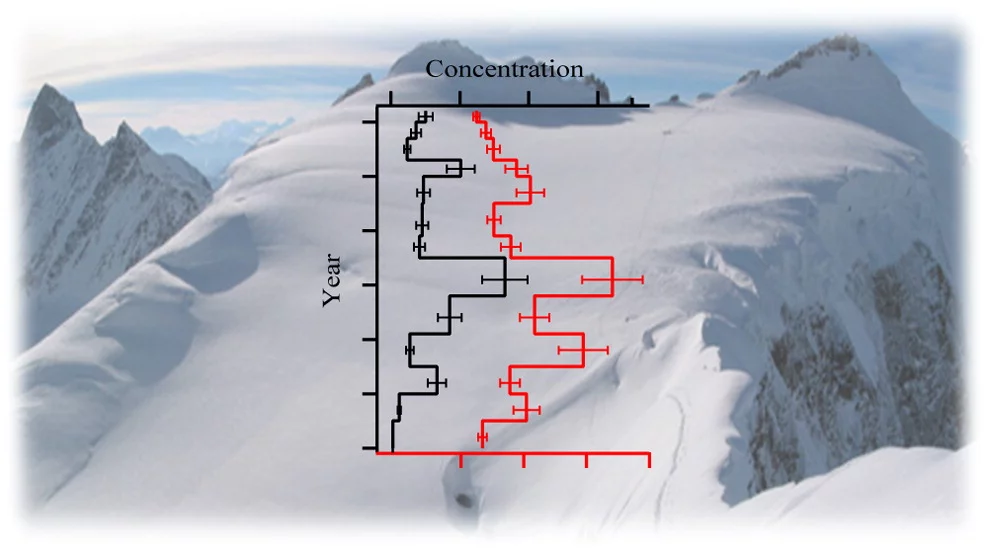Research Division Biology and Chemistry (BIO), Analytical Chemistry Research Group, Head Margit Schwikowski.
We present a highly time-resolved historical record of polychlorinated biphenyls (PCBs) from an Alpine ice core (Fiescherhorn glacier, Switzerland). Introduced in the 1940s, PCBs were widely used industrial chemicals. Because of their persistence they are still found in the environment, long after their production phase-out. The Fiescherhorn ice core record covers the entire time period of industrial use of PCBs, that is, 1940?2002. The total concentration of six PCBs varies from 0.5 to 5 ng/L and reveals a temporal trend, with an 8-fold increase from the early 1940s to the peak value in the 1970s. The level in 2002 is comparable to the concentration in the 1940s, when PCBs were introduced into the market. The time trend of PCBs associated with the particulate fraction closely follows the trend found in the dissolved fraction, but the absolute values are a factor of 10 lower. In addition to changing emissions, fluctuations in the PCB record were explained by variabilty in convective transport and postdepositional processes such as surface melting. Concentrations of PCBs are in agreement with data from seasonal snow samples in the Alps, but are a factor of 100 higher than concentrations measured in the Arctic. Contrasting time trends and congener patterns between the Alpine and Arctic region indicate the importance of atmospheric transport and postdepositional effects.
In a second publication, we present results from a chemical fate model describing deposition and incorporation of polychlorinated biphenyls (PCBs) into an Alpine glacier (Fiescherhorn, Switzerland) and an Arctic glacier (Lomonosovfonna, Norway). To understand PCB fate and dynamics, we investigate the interaction of deposition, sorption to ice and particles in the atmosphere and within the glacier, revolatilization, diffusion and degradation, and discuss the effects of these processes on the fate of individual PCB congeners. The model is able to reproduce measured absolute concentrations in the two glaciers for most PCB congeners. While the model generally predicts concentration profiles peaking in the 1970s, in the measurements, this behavior can only be seen for higher-chlorinated PCB congeners on Fiescherhorn glacier. We suspect seasonal melt processes are disturbing the concentration profiles of the lower-chlorinated PCB congeners. While a lower-chlorinated PCB congener is mainly deposited by dry deposition and almost completely revolatilized after deposition, a higher-chlorinated PCB congener is predominantly transferred to the glacier surface by wet deposition and then is incorporated into the glacier ice. The incorporated amounts of PCBs are higher on the Alpine glacier than on the Arctic glacier due to the higher precipitation rate and aerosol particle concentration on the former. Future studies should include the effects of seasonal melt processes, calculate the quantities of PCBs incorporated into the entire glacier surface, and estimate the quantity of chemicals released from glaciers to determine the importance of glaciers as a secondary source of organic chemicals to remote aquatic ecosystems.
Publication: http://dx.doi.org/10.1021/es5017922 and http://dx.doi.org/10.1021/es501793h
Further publications: LUC Homepage

